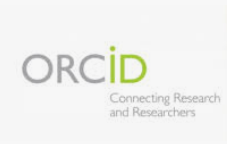Behavior of high-grade gliomas at Matanzas Neurosurgery service. 2017-2019
Keywords:
brain tumors, high grade gliomas.Abstract
Introduction. Anaplastic astrocytoma (AA) and Glioblastoma multiforme (GBM) are the most aggressive forms of malignant glioma. Despite advances in radiotherapy, chemotherapy and aggressive surgical resection treatments, such as optical coherence tomography, fluorescence-guided surgery, waking craniotomy, laser interstitial thermal therapy for GBM ablation, intraoperative confocal microscopy and intraoperative mass spectrometry, the prognosis remains bleak.
Objective: to determine the behavior of high grade gliomas in the Neurosurgery Service of the province of Matanzas.
Materials and methods: cross-sectional, descriptive, observational study with patients diagnosed with high-grade gliomas in the Neurosurgery Service of the province of Matanzas, in the period from January 1, 2017 to January 1, 2019, for a total of 40 cases.
Results: the average age of the lesionated patients was 52 years; headache was the predominant symptom, with 72.2 %; the evolution at the presentation of symptoms was less than a month.
Conclusions: frontal gliomas predominated in 62 % of the cases, and predominated also glioblastoma multiforme histological variety. Subtotal excision was used in most surgeries. Life quality at discharging was higher than at the moment of admission.
Downloads
References
2. Gronych J, Pfister E, Jones D. Connect Four with Glioblastoma Stem Cell Factors. Cell 157, April 24, 2014 Elsevier Inc.
3. Gómez-Vega JC., Ocampo Navia MI., Feo Lee O. Epidemiología y caracterización general de los tumores cerebrales primarios en el adulto. Univ Med. 2019; 60 (1). doi: http://dx.doi.org/10.11144/Javeriana.umed60-1.cere
4. Valenzuela R. Nuevas terapias en el manejo de los gliomas de alto grado. [REV. MED. CLIN. CONDES - 2017; 28(3) 401-408]
5. Vidal-Sicart S, Valdés Olmos R, Nieweg O E et al. De la imagen intervencionista a la guía intraoperatoria: nuevas perspectivas combinando herramientas avanzadas y navegación con la cirugía radioguiada. Rev Esp Med Nucl Imagen Mol. 2018;37(1):28–40. https://doi.org/10.1016/j.remn.2017.06.004
6. Díez Valle R, Slof J, Galván J, Arza A et al. Estudio observacional retrospectivo sobre la efectividad del ácido5-aminolevulínico en la cirugía de los gliomas malignos en España (Estudio VISIONA). Neurología. 2014; 29(3):131—138. doi:10.1016/j.nrl.2013.05.004
7. Castle M, Nájera E, Samprón N. et al. Biopsia cerebral estereotáctica sin marco: capacidad diagnóstica y complicaciones. Neurocirugía. 2014; 2 5(2):56–61. http://dx.doi.org/10.1016/j.neucir.2013.11.003
8. Lau, D.; Hervey-Jumper, S.L.; Han, S.J.; Berger, M.S. Intraoperative perception and estimates on extent of resection during awake glioma surgery: Overcoming the learning curve. J. Neurosurg. 2017, 1–9. [CrossRef] [PubMed]
9. Slof J, Díez Valle R, Galván J. Análisis coste-efectividad de la cirugía del glioma maligno guiada por fluorescencia con ácido 5-aminolevulínico. Neurología. 2015;30:163—168. http://dx.doi.org/10.1016/j.nrl.2013.11.002
10. Eseonu, C.I.; Rincon-Torroella, J.; ReFaey, K.; Lee, Y.M.; Nangiana, J.; Vivas-Buitrago, T.; Quinones-Hinojosa, A. Awake craniotomy vs. craniotomy under general anesthesia for perirolandic gliomas: Evaluating perioperative complications and extent of resection. Neurosurgery 2017, 81, 481–489. [CrossRef] [PubMed]
11. Ostrom QT, Gittleman H, Liao P, Vecchione-Koval T, Wolinsky Y, Kruchko C, et al. CBTRUS Statistical Report: Primary brain and other central nervous system tumors diagnosed in the United States in 2010-2014. Neuro Oncol. 2017;19(suppl.5):1-88.
12. Sierra Benítez EM, León Pérez MQ, Laud Rodríguez L, Carrillo Comas AL, Pérez Ortiz L, Rodríguez Ramos E. Gliomas malignos: biología molecular y detalles oncogenéticos. Rev Méd Electrón [Internet]. 2018 Jul-Ago [citado: fecha de acceso];40(4). Disponiblev en: http://www.revmedicaelectronica.sld.cu/index.php/rme/article/view/2480/3973
13. Cuba. Ministerio de Salud Pública. Anuario Estadístico de Salud 2017 [Internet]. La Habana: MINSAP; 2018 [citado: 24/05/2018]. Disponible en: http://bvscuba.sld.cu/anuario-estadistico-de-cuba
14. Sinning M. Clasificación de los tumores cerebrales. [REV. MED. CLIN. CONDES - 2017; 28(3) 339-342]
15. Pérez Ortiz L, Rodríguez Ramos E, Figueredo Rodríguez R y Barroso García E. Astrocitoma anaplásico y glioblastoma multiforme. Factores que influyen en la supervivencia. Rev Cubana Cir 2001;40(2):87-91
16. Molina V. Caracterización clínica e imagenológica de pacientes con glioblastoma o astrocitoma anaplásico atendidos en el Instituto Nacional de Cancerología durante el periodo enero 2007 – diciembre 2013. 2016. https://www.google.com/search?q=Caracterizaci%C3%B3n+cl%C3%ADnica+e+imagenol%C3%B3gica+de+pacientes+con+glioblastoma+o+astrocitoma+anapl%C3%A1sico+atendidos+en+el+Instituto+Nacional+de+Cancerolog%C3%ADa+durante+el+periodo+enero+2007+%E2%80%93+diciembre+2013&ie=utf-8&oe=utf-8&client=firefox-b
17. Mark S. Green berg, MD. Handbook of Neurosurgery. Eighth Edition. 2016
18. Basso A, Carrizo G, Mezzadri JJ, Goland J, Sokolovsky. Neurocirugía. Aspectos clínicos y quirúrgicos. Mayo del 2010. 1era edición. Rosario : Corpus libros médicos y científicos.
19. Díaz Naranjo YA, Figueredo Méndez JL. Ultrasonido intraoperatorio para detección de tumores intracraneales. Revista Cubana de Neurología y Neurocirugía. 2018;8(1):1-20
20. Stella Blasel y col. Perfusion MRI in the Evaluation of Suspected Glioblastoma Recurrence. J Neuroimaging 2016;26:116-123. DOI: 10.1111/jon.12247
21. Solomón Cardona MT, Ardisana Santana E, Cabrera Guillot E. Controversias en el tratamiento quirúrgico de los gliomas lobares de alto grado. Revista Cubana de Neurología y Neurocirugía. 2018;8(1):1-20
22. Solomon MT, Selva JC, Figueredo J, Vaquer J, Toledo C, Crombet T, et al. Radiotherapy plus nimotuzumab or placebo in the treatment of high grade glioma patients: results from a randomized, double blind trial. BMC Cancer. 2013;13:299.
23. Solomon Cardona MT. Eficacia y seguridad en el tratamiento combinado de cirugía, radioterapia y nimotuzumab en pacientes con gliomas de alto grado de malignidad [Internet]. Repositorio de Infomed.
24. García Feliciano F, Vaca Ruíz MA, Gaona Valle LS. Pronóstico funcional y días de estancia intrahospitalaria en pacientes sometidos a resección de lesiones supratentoriales, en áreas cerebrales elocuentes, con técnica de craneotomía en paciente despierto versus craneotomía convencional [tesis que para obtener el diploma de posgrado en la especialidad de Neurocirugía en Internet]. Toluca: Universidad Autónoma del Estado de México; 2014 [citado: 20/01/2018]. Disponible en: http://ri.uaemex.mx/handle/20.500.11799/59197
25. Ammirati M, Vick N, Liao Y, Ciric I, Mikhael M. Effect of extent of surgical resection on survival and quality of life in patients with supratentorial glioblastomas and anaplastic astrocytoma’s. Neurosurgery. 1987;21(2):201-6.
Published
How to Cite
Issue
Section
License
All content published in this journal is Open Access, distributed under the terms of the CC BY-NC 4.0 License.
It allows:
- Copy and redistribute published material in any medium or format.
- Adapt the content.
This will be done under the following terms:
- Attribute the authors' credits and indicate whether changes were made, in which case it must be in a reasonable way.
- Non-commercial use.
- Recognize the journal where it is published.
The copyrights of each article are maintained, without restrictions.





